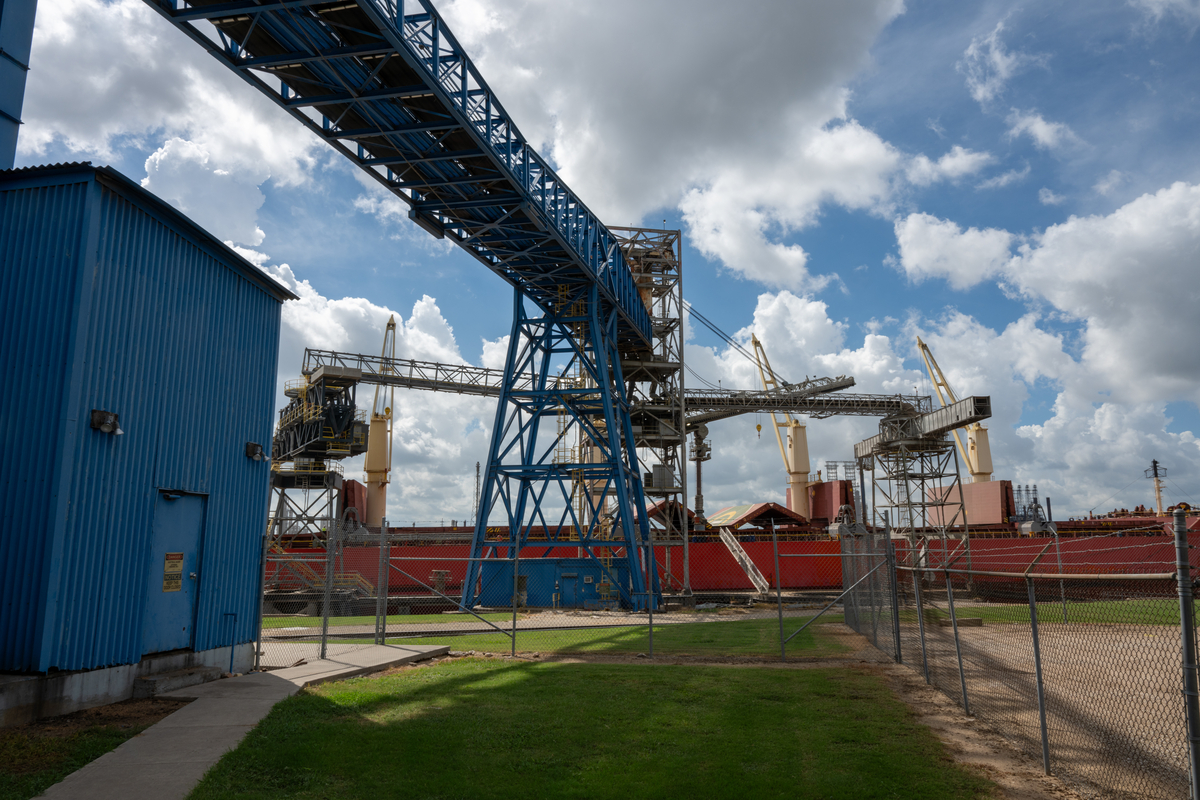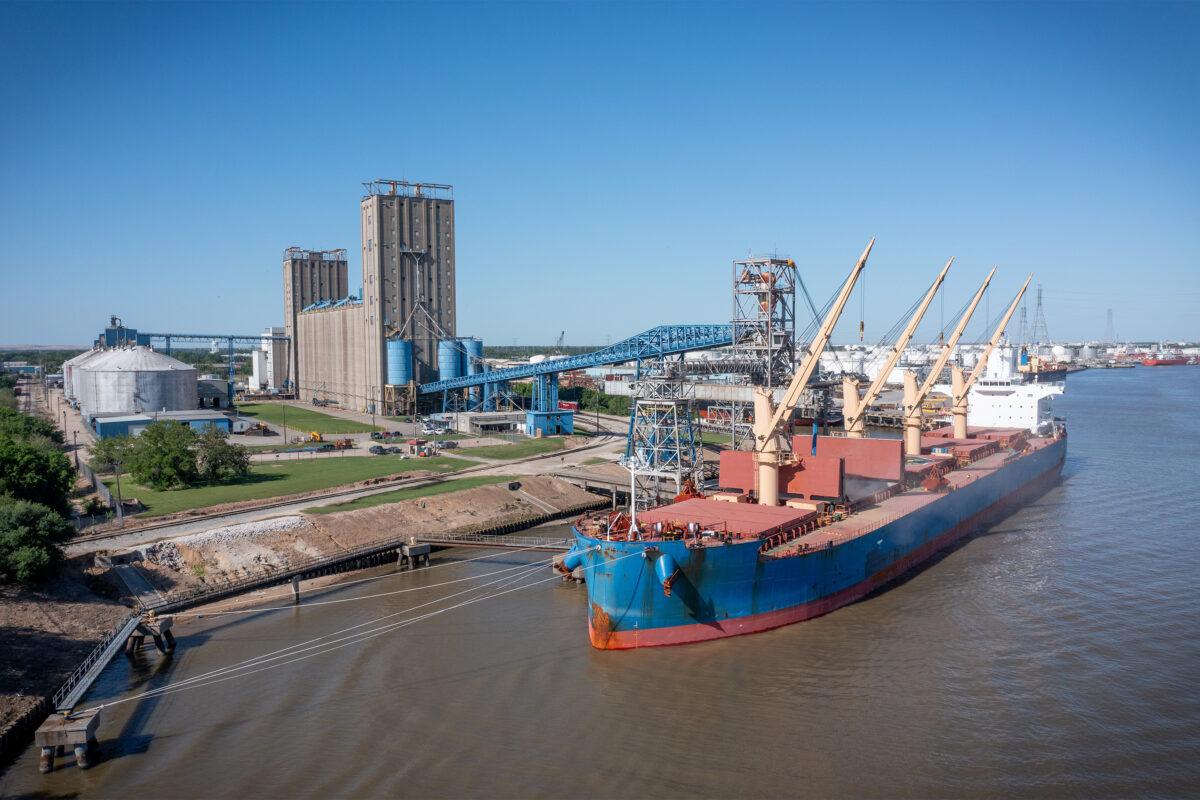Your soybean checkoff dollars change Cambodian lives

Thousands of miles away, your checkoff dollars support Cambodians with food security at the same they grow trade for U.S. Soy. A group of U.S. farmers were able to experience it firsthand.
In-pond raceways are a vital tool in aquaculture. Aquaculture is the breeding, raising and harvesting of fish, shellfish and aquatic plants. In-pond raceways are the structures that contain the fish, allowing farmers to create healthier habitats by simulating natural currents, containing feed and removing excrement.
WISHH aquaculture advisor in Cambodia, Leonard Rodgers, Ph.D., used his decades of experience to adapt raceway designs he worked with at Auburn University to meet the southeast Asian nation’s unique challenges. The resulting IPRS is a breakthrough technology that continues to improve.
The IPRS also help farmers manage fish in Cambodia, where they traditionally use homemade feeds with rice bran as the main ingredient. “It’s low in protein so you have to feed a lot of it to put muscle on the fish,” says Rodgers. “An in-pond-raceway helps the farmers monitor their biggest cost outlay, which is feed. Cambodian fish farmers’ feed costs usually constitute 70% to 90% of their cost of production. In an IPRS, farmers can monitor the feed as they put it in and make sure they don’t overfeed.”
Meanwhile, WISHH is working with Cambodian feed mills to manufacture soy-based feeds for aquaculture. One of these feed mills is already a U.S. Soy customer and showed the U.S. soybean growers the mill’s multi-million-dollar expansion. Through WISHH’s Food for Progress Project in Cambodia, WISHH recently sent a technical expert to the mill to work with them on their extrusion equipment that serves their production of feeds for fish, swine, duck and more.
WISHH’s USDA Food for Progress Project focuses on building the aquaculture value chain. And a big piece of that is quality feed made with U.S. soybeans.
Recently, grower-leaders from the American Soybean Association (ASA) and ASA’s World Initiative for Soy in Human Health (WISHH) Program and the United Soybean Board (USB) visited Cambodia to see the USDA Foreign Agricultural Service (FAS)-funded Commercialization of Aquaculture for Sustainable Trade (CAST)-Cambodia project designed to accelerate production of high demand fish species for the Cambodian market and develop a lasting aquaculture industry.
WISHH is able to leverage this project with checkoff funds to accomplish even more.
“The CAST project is teaching farmers and producers how to feed to the different growth stages of the fish,” Gena Perry, Executive Director of WISHH, says. “They are learning how to feed properly, ensuring they’re not overfeeding, and then using the soy-based pelletized feed.”

USB supports WISHH to enhance focus on issues that incorporate and support the supply, demand, communications and education goals of USB’s new strategic plan in the priority areas of infrastructure and connectivity, health and nutrition, and innovation and technology.
While in Cambodia, USB Director Greg Greving also represented U.S. soybean growers as a speaker at the Third International Sustainable Agricultural Intensification and Nutrition Conference (called SAIN3) The WISHH and USB-sponsored conference allowed university and other agricultural experts from throughout the world to hear how U.S. soybean growers are committed to conservation and sustainability at the same time they increase soybean productivity.
He shared how his family has increased soybean yields to about 2.5 metric tons of soybeans per acre at the same time they implemented new sustainability practices such as cover crops for soil health. He also described how USB puts a priority on health and nutrition.
Checkoff promotes floating feed
WISHH is working to switch farmers from their traditional feeds that are still widely used today. Homemade fish food consisting of rice bran, groundfish parts and some vitamins or minerals as the primary diet for multiple species. The food was then dumped into a pond, causing water quality issues and improper nutrition for the fish.
“They don’t know how much performance they are getting out of their fish — something that we call the feed conversion ratio,” Jim Hershey, Chief of Party for the CAST Cambodia project, says. “Modern animal agriculture is about feed in and meat out, and properly formulated commercial feed is, frankly, always best.”
Funding for USDA projects typically lasts five years. With that in mind, Perry says that WISHH helped create the Cambodian Aquaculturist Association (CAA). The CAA offers a sustainability strategy to carry on the work of improving aquaculture and soy usage in Cambodia after the project ends in 2023.
“We’re looking to continue to build that relationship and supply them with knowledge and experience. And then we follow up with market development funding to continue building on that success,” Perry says. “But with the [CAA] Association, they can start self-sustaining and start advocating for themselves. It’s grown to over 600 members in the past two years, which is incredible given COVID.”
State and national checkoffs spur innovation
Perry says that funding from state soybean boards and the soybean checkoff is used to leverage dollars provided by the USDA.
 The Nebraska Soybean Board provided funding to WISHH to improve aerator technology for the in-pond raceways being implemented in Cambodia. The aerators improve oxygen rates in the in-pond raceway systems, promoting fish health. Missouri provided checkoff funding to engineer the special Cambodian raceways.
The Nebraska Soybean Board provided funding to WISHH to improve aerator technology for the in-pond raceways being implemented in Cambodia. The aerators improve oxygen rates in the in-pond raceway systems, promoting fish health. Missouri provided checkoff funding to engineer the special Cambodian raceways.
“It’s like anything else that you’re trying to sell or promote — you need to keep hitting the bricks and keep getting them the stuff that they need,” Greg Greving, a farmer-leader from Nebraska, says after visiting Cambodia with other WISHH trade team members. “WISHH could not operate without the checkoff. When you go over there, you see what the checkoff is doing, and that gives you the passion and the drive to keep going and pushing and hitting the bricks to increase demand.”
Other state soybean boards also acted. A widespread species of fish in Cambodia is called the snakehead. Cambodians and others in Southeast Asia consume the firm, flaky and white meat fish. Illinois Soybean Association support helped train snakehead fish to eat floating soy-based fish feed, expanding demand for pelletized feeds in the country.
Ideal for fish to thrive, in-pond raceway systems overcome some of the weather-related challenges in Cambodia. The Missouri Soybean Merchandising Council funds made it possible for WISHH to introduce in-pond raceway systems in Cambodia in 2020. These systems are built to help Cambodian farmers overcome their unique fish production challenges, which will allow them to use more soy-based pellet feeds. The U.S. farmers witnessed a fabrication center that is making the fourth generation of the IPRS. WISHH is leveraging Missouri checkoff investments with USB funding to promote the fourth-generation models of the IPRS in Cambodia.
The country is impacted by a dry season and a wet season that is known to flood areas for months at a time. The in-pond raceway systems float on the water, preventing fish loss during pond flooding. The raceway systems keep the fish feed contained, allowing the farmer to gauge the proper amount of food needed to feed the fish. That helps with the cost and the efficiency of raising the fish to market weight.
Success stories across the country could lead to establishing and expanding a market for U.S. soybeans in the future. Cambodia is a growing market for U.S. agricultural exports, with $72.7 million in sales in 2020 — an increase of 474% over the past 10 years. In 2021, the United States opened its first U.S. Department of Agriculture (USDA) office in Phnom Penh to support the growing agricultural trade between the two countries.
“We are working with feed mill operators and the exporters to ensure that U.S. soybeans are available. Otherwise, they’re going to look elsewhere,” Brad Doyle, president of ASA, says after touring an aquaculture farm in Cambodia. “We want to put money in their pockets so they can expand their business and feed their families. I think that is critical. It will bring in more soybeans, but they have to have the availability of U.S. soybeans.”
Gerry Hayden, immediate past chairman of WISHH and a Kentucky soybean farmer, sees Cambodia as a powerful export market opportunity for U.S. soybeans in the next decade.
“We’re over here to help the Cambodians with this technology (pelletized feed and in-pond raceways),” Hayden says. “The ability to be efficient and grow fish species in their backyard is tremendous. The resourcefulness of the Cambodian people is amazing, taking care of business with what they’ve got.”














